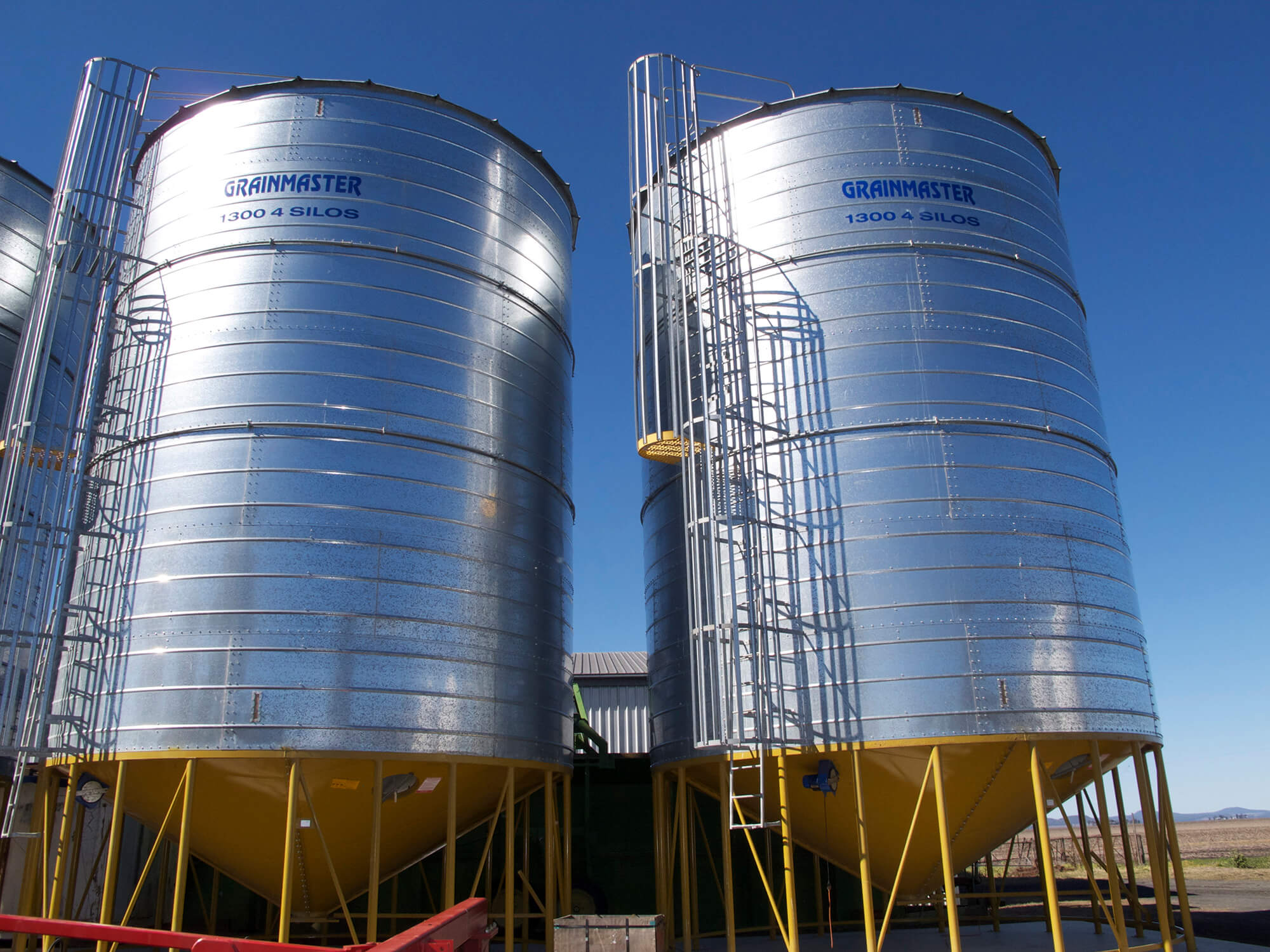
Growers spend significant time and money throughout the season to ensure high-yielding crops with good protein or oil levels. So once the crops are harvested, it is important to protect that investment.
On-farm storage capacity has grown significantly in recent years as farmers have installed new silos and other storage options. Maintaining grain quality in these storages is a top priority. Many things can compromise quality, including temperature, moisture, and pests such as weevils, beetles and mites. Recognising this, a range of technologies has emerged to help growers and grain handlers maintain grain quality both in storage and through the supply chain.

On-farm storage capacity has grown significantly in recent years. Photo: Sarah Clarry
Aeration
Aeration cooling regularly flushes warm, moist air out of storage. It prevents insects breeding, lowers humidity, and prevents mould growth. To be most effective, aeration cooling needs to be switched on at times when the air is coolest and driest. Aeration controllers monitor the ambient conditions and switch the fans on to take advantage of optimal times. A number of commercial controllers now use predictive algorithms to optimise the times of operation, and cloud-based systems to provide operational, as well as historical data.
Previously, aeration fans were limited by their power consumption. Fans draw substantial current in the start-up phase, so this demand limited the number of fans that could be operated at once. Now soft start motors are available for aeration fans, which limit the surge of current and allow growers to operate more fans simultaneously. This in turn lowers their electricity consumption and costs. For growers installing new silos, soft start motors remove the need for additional power capacity.
AgTech Finder aeration vendors:

Aeration controllers monitor ambient conditions and switch the fans on when the air is coolest and driest. Photo: www.grainaeration.com.au
Beyond the farm gate
Some tech providers have now developed applications that monitor commodities beyond the farm or grain handling facility.
For example, mobile satellite communications provider Inmarsat offers a crop storage and logistics solution that utilises sensors and LoRaWAN technology to monitor storage conditions for grain right along the supply chain.
Low-cost sensors monitor commodities in real time, and take measurements such as temperature, humidity and CO2. The data is transferred via LoRaWAN to a software defined gateway, before it is sent via satellite or cellular connectivity to an app. Customised dashboards give growers and grain handlers a visualisation of the crop through the supply chain, and provide real-time alerts changes in storage conditions that could lead to quality losses.
Internet of Things (IoT) provider Telesense offers a solution called GrainSafe, a scalable artificial intelligence platform that continuously monitors temperature and humidity via portable and fixed wireless sensors to provide a real-time, comprehensive view of stored grain conditions. TeleSense uses cloud-based technology and has access to more than 20 million temperature and humidity observations to improve its machine-learning algorithms.
BinSentry is a solar-powered feed bin sensor that that enables feed mills and livestock producers to monitor on-farm inventory, and thereby increase operational efficiencies. It uses self-cleaning LiDAR sensors to read bins every four hours. Users confirm the correct feed is in their bins with a dashboard accessible from mobile devices or computers.
Because BinSentry uses low-power, long-range networks, remotely located feed bins can be monitored, regardless of whether internet connectivity is available. In addition to its benefits as a stock control tool, it enhances employee safety by eliminating the need for producers or feed mill employees to climb into a bin to check inventory levels.
Agriculture Victoria’s IoT Trial
Agriculture Victoria’s On-Farm IoT Trial is now underway to support the uptake of IoT on Victorian farms. The trial incorporates a number of new technologies that relate to grain storage, including:
myinsight.io Ultrasonic Level Displacement Sensor Kit – uses an ultrasonic wave to record the distance to a surface and can be used to monitor the level of grain in a silo
Padman’s Multiwatcher Pro – a fixed solar-powered unit for integrating the Padman PAMS IoT network with third-party sensors and monitoring devices
Halo Grain Silo Level % and Alert – monitors the percentage at which a silo is filled and can pre-set levels to send alerts when triggered
Grains Industry Technology Coordinator for the project, Mark Gould, says the IoT trial is designed to engage with farmers and help them decide what tech they might want to use on their own farms. His role is to works with growers to help them understand the technologies.
“The farmers involved co-invested in these technologies through a tender process,” Mr Gould said. “The trial is allowing them to see what might work for them on their own farm, and it reduces the cost to them of trialling the data.”
More information: agriculture.vic.gov.au/digitalag



